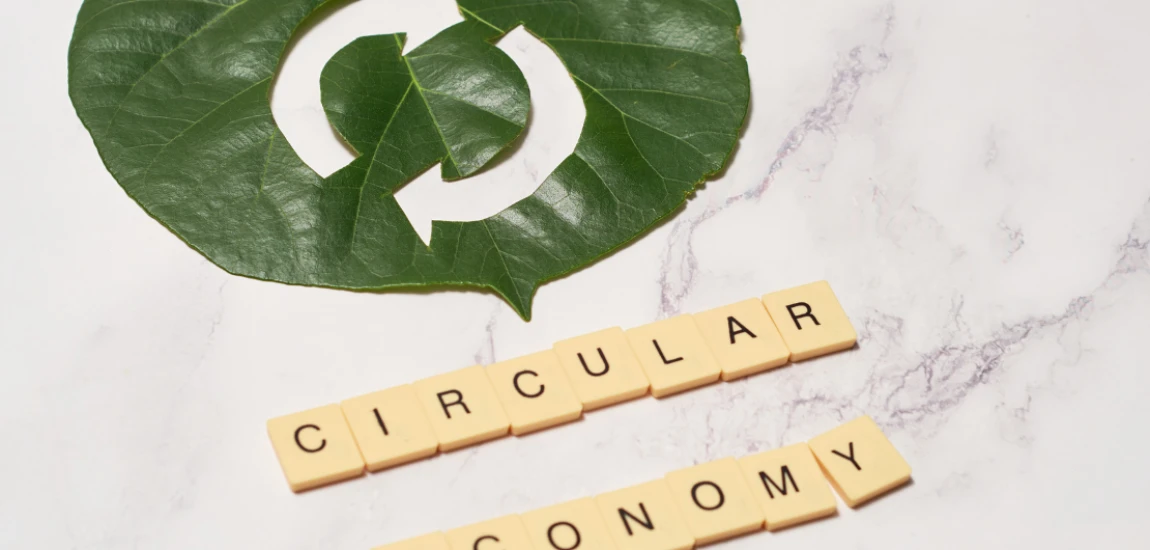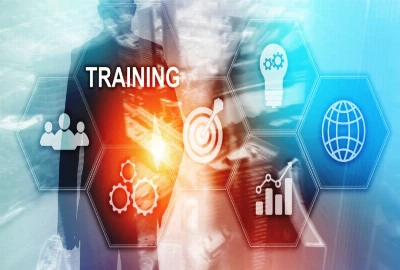The Circular Economy: Designing Out Waste for a Sustainable Future

The way we produce, consume, and dispose of goods has reached a breaking point. Traditional linear economies—take, make, and throw away—rely heavily on extracting natural resources, creating massive amounts of waste, and generating pollution that worsens climate change. According to the World Bank, global waste is expected to increase by 70% by 2050 if no changes are made. This highlights the urgency of rethinking how our economies function.
Enter the circular economy, an innovative model that challenges the wasteful habits of the past. Instead of following a straight line from production to disposal, the circular economy emphasizes designing out waste, keeping products in use longer, and regenerating natural systems. In this approach, resources circulate in closed loops—just as ecosystems do in nature—ensuring that waste becomes a resource rather than a burden.
The concept is gaining traction worldwide. Governments, businesses, and individuals are recognizing that sustainability is no longer a choice but a necessity. Global brands are already adopting circular economy principles, from fashion companies experimenting with recycled fabrics to electronics manufacturers creating repair-friendly products. Meanwhile, startups are building business models around recycling, upcycling, and sharing economies.
The circular economy isn’t just about reducing waste—it’s about redesigning entire systems. It requires innovation in product design, new business models, technological advancements, and cultural shifts in consumer behavior. By embedding sustainability into the fabric of how economies function, the circular economy paves the way for a sustainable future that balances economic growth with environmental responsibility.
In the following sections, we’ll explore what makes this model revolutionary, real-world applications across industries, challenges to its adoption, and practical steps individuals and organizations can take to contribute to this global transformation.
Understanding the Circular Economy Model
At its core, the circular economy is guided by three principles: designing out waste and pollution, keeping products and materials in use, and regenerating natural systems. These ideas contrast sharply with the linear economy, where waste is considered inevitable.
Designing Out Waste: In a circular system, waste doesn’t exist. Products are designed to be durable, repairable, and recyclable from the start. Materials are chosen carefully so they can be reused or safely return to the environment. For example, modular smartphones allow users to replace individual parts without discarding the entire device.
Keeping Products in Use: Extending the lifecycle of goods is another key component. This can involve sharing platforms (like car-sharing services), remanufacturing (refurbishing old products to make them like new), and promoting repair over replacement. IKEA, for example, has begun offering furniture buy-back and resale services to encourage reuse.
Regenerating Natural Systems: Unlike the extractive nature of linear models, the circular economy supports the environment. Composting organic waste, for instance, enriches soil instead of filling landfills. Similarly, renewable energy sources like wind and solar power replace fossil fuels, reducing environmental impact.
The circular model also relies on closed-loop supply chains, where companies take responsibility for their products even after consumers are done using them. Instead of a product ending in a landfill, companies reclaim materials for new production. This reduces dependency on virgin resources and minimizes ecological damage.
Importantly, the circular economy is not just an environmental initiative—it also makes business sense. By using resources more efficiently, companies reduce costs, build resilience against supply chain disruptions, and appeal to eco-conscious consumers. According to the Ellen MacArthur Foundation, circular economy strategies could generate $4.5 trillion in economic benefits by 2030.
Ultimately, the circular economy represents a paradigm shift in how society views progress. Growth is no longer tied to resource depletion but instead to innovation, efficiency, and sustainability.

Real-World Examples of the Circular Economy in Action
The circular economy is not just theory—it’s already reshaping industries worldwide. From fashion to technology, innovative companies are demonstrating how circular practices can be both profitable and sustainable.
Fashion and Textiles
The fashion industry is notorious for waste, with millions of tons of textiles discarded annually. Brands like Patagonia and Levi’s are combating this by encouraging repair and resale of clothing. Emerging startups like Rent the Runway promote clothing rentals, reducing the need for fast fashion purchases. Circular fashion also includes developing fabrics from recycled materials, such as plastic bottles or old textiles.
Electronics and Technology
Tech companies are embracing modular design and recycling programs. Fairphone, for instance, designs smartphones with replaceable parts, extending their life cycle and reducing electronic waste. Apple has also launched a program where robots disassemble old iPhones to recover valuable materials like rare earth metals.
Food and Agriculture
In agriculture, circular practices focus on reducing food waste and regenerating natural systems. Unsold food is redirected to food banks, composted, or transformed into energy through anaerobic digestion. Farmers are adopting regenerative agriculture techniques, such as crop rotation and organic fertilization, to improve soil health.
Energy and Infrastructure
Cities and energy sectors are experimenting with smart grids and renewable energy solutions to reduce waste and increase efficiency. Amsterdam, for example, has committed to becoming a fully circular city by 2050 by redesigning urban planning around sustainability principles.
Packaging and Plastics
Companies like Loop are rethinking packaging by introducing reusable containers for everyday products. Meanwhile, startups are creating biodegradable packaging from seaweed, mushrooms, and other natural sources to replace single-use plastics.
These examples prove that the circular economy is not only possible but also scalable across industries. As more businesses adopt these practices, economies of scale will make circular solutions more accessible, affordable, and mainstream.

Challenges and Ethical Considerations
While the circular economy offers immense promise, it is not without obstacles. Transitioning from a linear to a circular model requires systemic changes, which present challenges for businesses, policymakers, and consumers alike.
High Initial Costs: Redesigning products, restructuring supply chains, and creating recycling infrastructure demand significant investment. Small businesses may find these costs difficult to manage without support.
Consumer Behavior: Cultural habits of convenience and disposability remain deeply ingrained. Encouraging people to repair instead of replace or embrace secondhand goods requires a shift in mindset and education.
Technology and Innovation Gaps: While many industries have made progress, certain materials—like composite plastics—remain difficult to recycle. Continued research and innovation are needed to overcome these limitations.
Regulatory Frameworks: Effective policies are crucial for scaling the circular economy. Governments must create incentives for businesses to adopt circular practices, enforce regulations against waste, and invest in recycling and renewable energy infrastructure.
Ethical Questions: The shift also raises ethical issues. For instance, global inequality could widen if developed countries advance circular models while developing nations struggle with waste infrastructure. Additionally, the environmental benefits of recycling certain materials may not always outweigh the energy required to process them.
Despite these challenges, the movement toward circularity is gaining momentum. Addressing these barriers requires collaboration between governments, industries, and consumers. Transparent communication and ethical considerations must guide decision-making to ensure that the circular economy benefits everyone—not just a privileged few.

Building a Circular Future: What Individuals and Organizations Can Do
The success of the circular economy depends on collective action. While systemic change is necessary, individuals, businesses, and governments all have roles to play in driving this transition.
What Individuals Can Do
Buy Less, Choose Better: Opt for durable, repairable products over disposable ones.
Repair and Reuse: Learn basic repair skills or use repair services instead of discarding broken items.
Recycle Properly: Follow local recycling guidelines to ensure materials are processed correctly.
Support Circular Brands: Choose companies that prioritize sustainability and circular practices.
Adopt Sharing Economies: Use car-sharing, clothing rentals, and peer-to-peer platforms that reduce overconsumption.
What Businesses Can Do
Redesign Products: Incorporate durability, repairability, and recyclability into design from the start.
Implement Take-Back Programs: Create closed-loop supply chains where customers return used products for refurbishment or recycling.
Collaborate Across Industries: Share innovations and resources to create large-scale change.
Invest in Green Innovation: Support research and development in sustainable materials and recycling technologies.
What Governments Can Do
Provide Incentives: Offer tax breaks and subsidies for circular initiatives.
Create Regulations: Ban single-use plastics, enforce recycling mandates, and hold businesses accountable for waste.
Invest in Infrastructure: Build facilities for recycling, composting, and renewable energy.
Educate the Public: Promote awareness campaigns on sustainability and waste reduction.
By acting together, these efforts can accelerate the transition toward a truly sustainable, circular economy.




